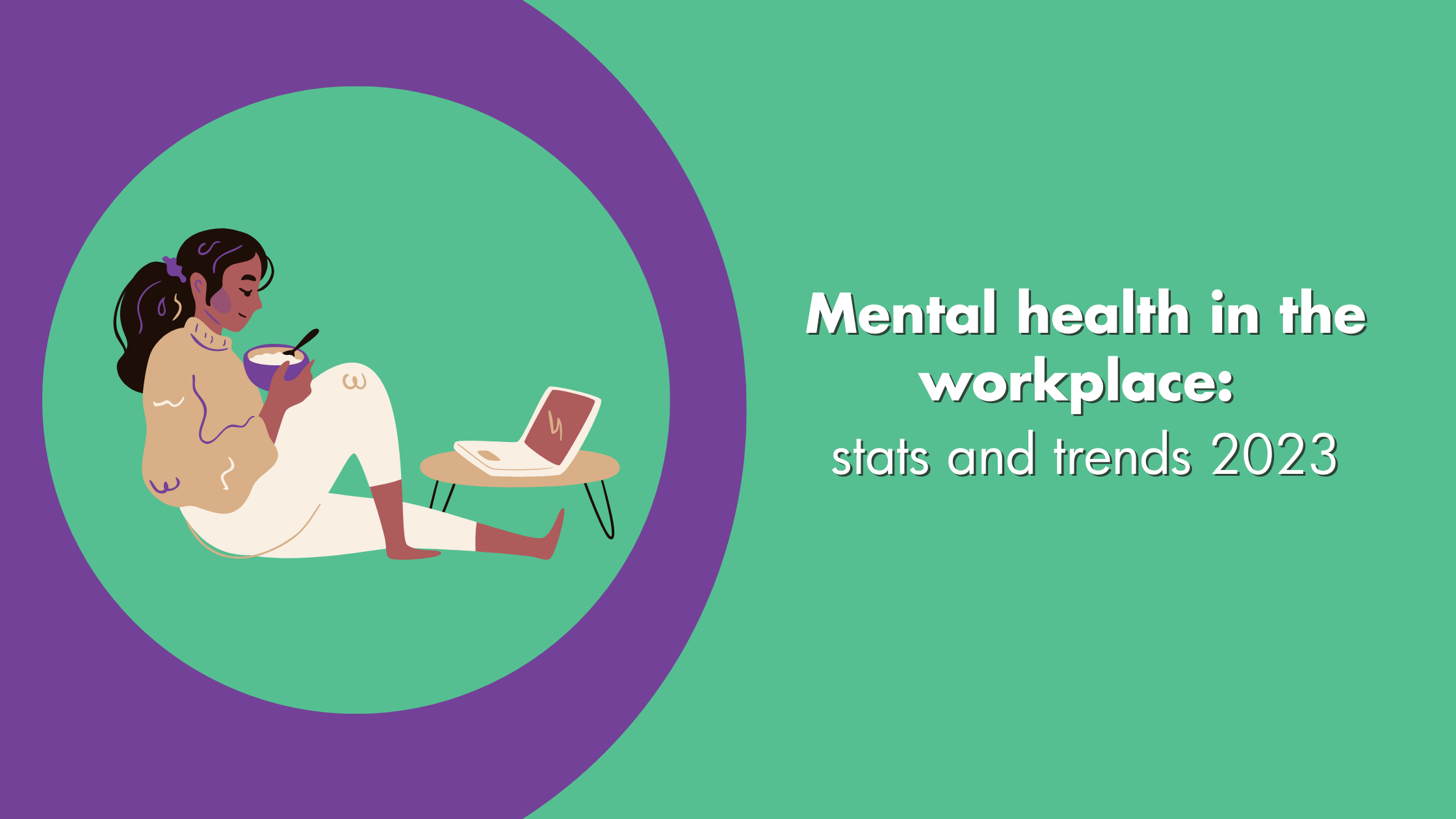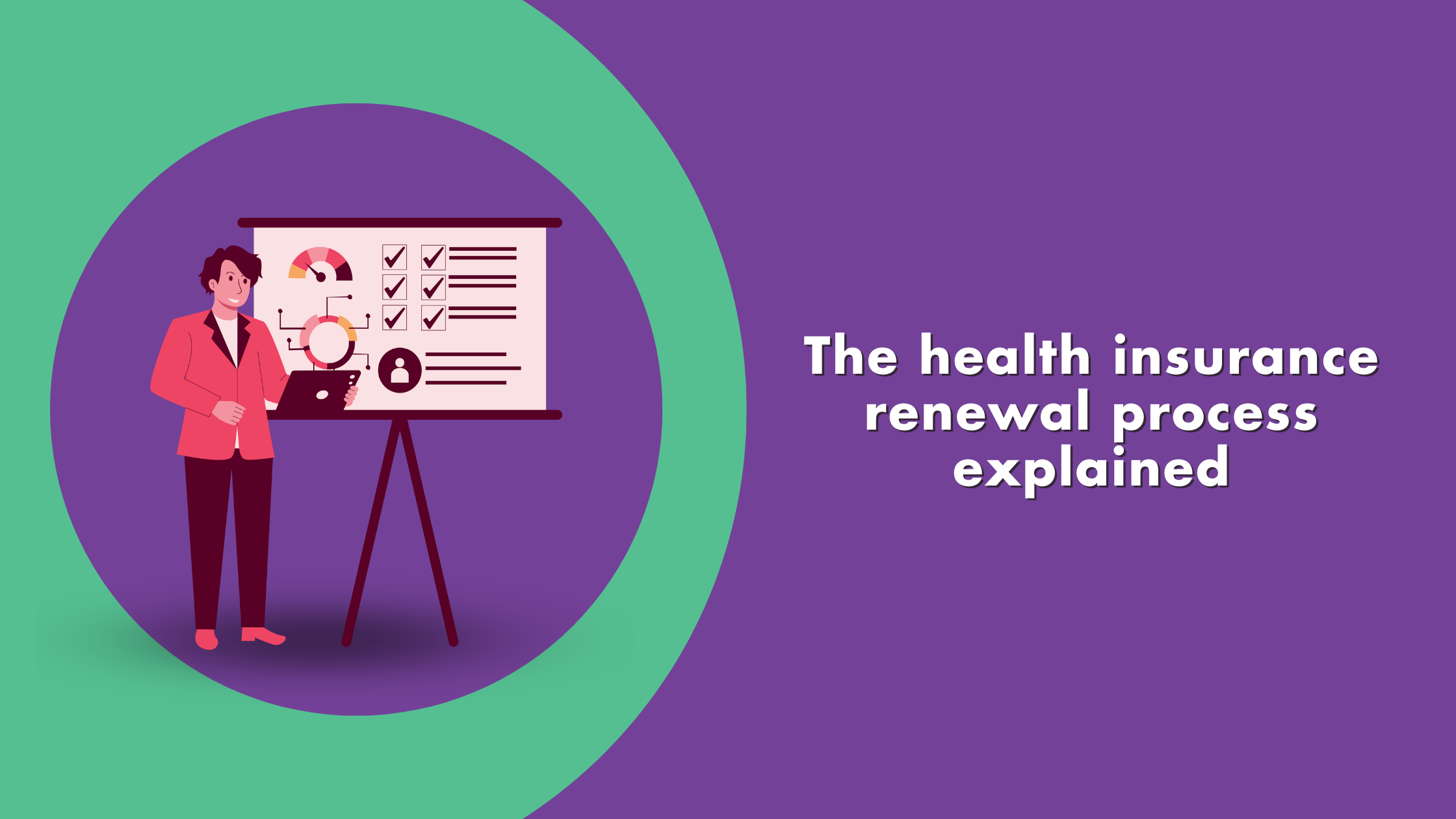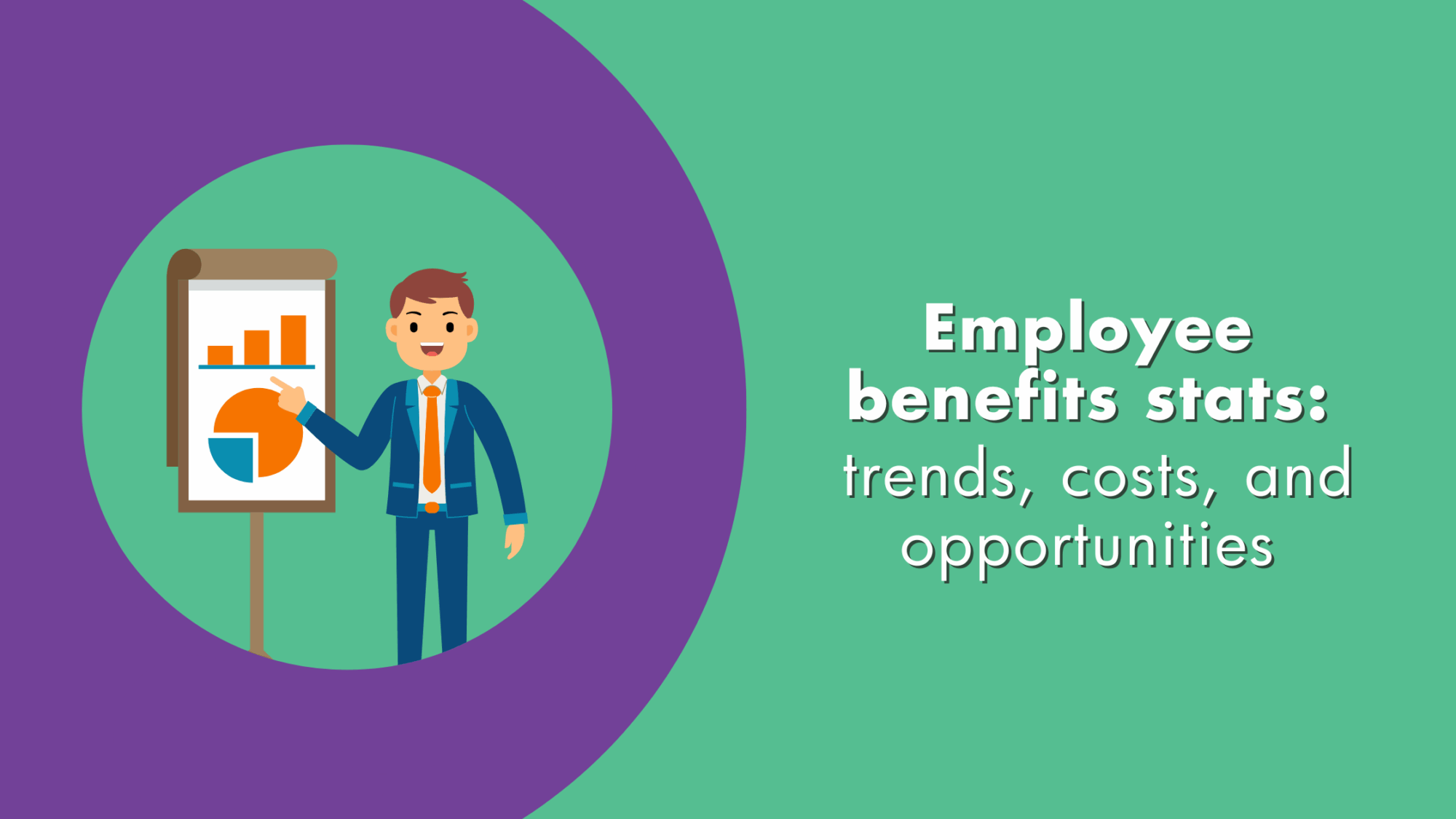Mental health has become something of a buzzword in recent years. But what is the extent of the problem in the workplace? And how is it impacting businesses?
We’ve gathered the latest mental health in the workplace stats and facts to help you find the answers to these questions and much more.
Note: All sources are referenced at the end of this resource.
Hooray Health & Protection is a friendly award-winning employee benefits broker, specialising in helping start-ups and SMEs save money and gain maximum value from their benefits schemes. Access free advice by calling 01273 222805 or emailing hello@hoorayinsurance.co.uk.
- 1 The current state of mental wellbeing in the workplace
- 2 Identifying the causes of poor mental health
- 3 Top 10 barriers to making positive health changes
- 4 The impact of poor mental health
- 5 Cost of workplace mental health in the UK
- 6 Mental health by sector
- 7 Improving mental health: obstacles to overcome
- 8 Need one-to-one advice and support?
- 9 References:
The current state of mental wellbeing in the workplace
The following stats demonstrate that mental wellbeing is a hot topic right now.
- 50% of staff are feeling stressed at work – Yougov [1]
- 60-80% of workplace accidents are the result of stress-induced issues – EHS Today [2]
- 52% of staff are feeling burned out – American Institute of Stress [3]
- In 2021/2022, there were 1.8 million workers suffering from a work-related illness. Of these workers, 914,000 were suffering from work-related stress, depression, or anxiety – HSE [4]
- 74% of people feel so stressed they have been overwhelmed or unable to cope – Mental Health Foundation [5]
- 9% of professionals are experiencing thoughts of suicide or self-harm – Champion Health [6]
- In 2023, 67% of employees were experiencing moderate to high stress levels – Champion Health [6]
- There was a 23% increase in employees experiencing financial pressure this year – Champion Health [6]
- 60% of employees feel anxious – Champion Health [6]
- 56% of employees experience low moods – Champion Health [6]
- 19% of employees have a current mental health diagnosis – Champion Health [6]
- 66% of staff aged 25-35 experience symptoms of anxiety – Champion Health [6]
- Over 80% of professionals experience fatigue at work – Champion Health [6]
- 51% of staff “feel supported at work” – Champion Health [6]
Identifying the causes of poor mental health
There are endless, often quite personal, factors why your staff might be suffering a decline in their mental health. But here’s what some of the most authoritative surveys have to say:
- The most common cause of stress is work-related stress, with 79% of employees saying they frequently have these feelings – Statista [7]
- Finances are a leading cause of stress – 37% of employees say financial pressure is now the top cause of stress outside of the workplace – Champion Health [6]
- 61% struggle being productive due to tiredness – Champion Health [6]
- Tiredness is the top cause of reduced productivity – Champion Health [6]
- 55% of people who experience depression say that work is a contributing factor – CiPD [13]
Top 10 barriers to making positive health changes
Although we know that more people, workplaces, and employers are recognising the importance of mental health, making positive changes is difficult.
A survey by Champion Health [6] discovered the following barriers to making mental health changes in 2023:
- 47% said willpower
- 43% said lack of time
- 33% said work commitments
- 26% said family commitments
- 20% said mental health
- 19% said low confidence
- 12% said lack of knowledge
- 11% said lack of support
- 9% said finances
The impact of poor mental health
The following mental health in the workplace stats trace the impact mental wellbeing has on their work and their lives.
- 1 in 6 people experience mental health problems in the workplace – Mental Health Foundation [5]
- Since the pandemic, 81% of workplaces have increased their focus on employee mental health – CiPD [8]
- Only 13% of staff feel comfortable discussing mental health in the workplace – Mental Health First Aid England (MHFA) [9]
- Happy staff are 13% more productive – University of Oxford [10]
- 89% of employees with mental health issues say it impacts their working life. More than half of these have considered resigning from a job due to being negatively impacted by their mental health – CV Library [11]
- Around 50% of long-term sick leave is due to stress, depression, anxiety – HSE [4]
- Around 300,000 people with mental health issues lose their jobs each year – DWP [19]
- 79% of UK employees feel close to burnout – CharlieHR/Spill [14]
- Over a quarter of staff say they can’t switch off in their personal time – hinting at increasingly blurred work-life boundaries – CiPD [13]
- An estimated 35.2 million working days were lost in 2022/23 due to work-related ill health or injury – HSE [15]
- Poor mental health negatively impacts the performance of 1 in 5 employees – Champion Health [6]
Cost of workplace mental health in the UK
Leaving your staff to battle any mental health issue is going to negatively cost and affect your workplace – whether that’s financially, culturally, or productivity wise.
- Poor workplace mental health costs UK employers around £56 billion each year – MHFA England [12]
- Presenteeism costs around £28 billion, staff turnover around £22 billion, and absenteeism around £6 billion – Deloitte [16]
- 28% of UK sick days are due to poor workplace mental health – Deloitte [16]
- 61% of UK employees who left a job in the last year / plan to leave in the next 12 months have cited poor mental health as a factor – Deloitte [16]
- Cost of staff turnover due to poor mental health has increased by over 150% in the last 3 years: from £8.6 billion (2019) to £22.4 billion (2021) – Deloitte [16]
- 51% of all work-related ill health is down to stress, anxiety, and depression – HSE [4]
- In 2021-2022, 17 million days were lost due to work-related stress, depression, or anxiety – an average of 18.6 days lost per case – HSE [4]
- Initiatives aimed at improving workplace mental health can have a return on investment up to 800% – higher productivity, fewer sick days, lower staff turnover – Mental Health First Aid England (MHFA) [9]
- Mental health initiatives can save UK businesses up to £8 billion each year – Koa Health [17]
- Investing £80 per employee in promoting wellbeing at work will create a net return of around £600 savings – reduced presenteeism and absenteeism – Mental Health Foundation [5]
Mental health by sector
Working in different sectors or industries comes with its own each unique set of problems to tackle and overcome. Let’s see what these mental health in the workplace stats have to say:
- 54% of staff in the tech industry work more on weekends/in the evening than before Covid – CharlieHR/Spill [14]
- 86% of finance organisations have had an increase in demand for mental health support in 2021 – Koa Health [17]
- 45% of workers in construction/engineering have taken time off due to poor mental wellbeing – Benenden Health [18]
- Education sector had a 70% turnover rate in 2020-2021 – Deloitte [16]
- Across all sectors, 47% of employees display clear presenteeism – Deloitte [16]
- 82% of employees in the tech industry are feeling burnout – CharlieHR/Spill [14]
Improving mental health: obstacles to overcome
We complete our collection of mental health in the workplace stats by looking at how things are changing or still need to change. As ever, there’s work to do, but positive signs ahead!
The negatives:
- 52% of employees don’t feel they are receiving enough support from employers on mental wellbeing – Deloitte [16]
- Only 38% of HR respondents say their line managers are equipped for sensitive conversations around mental health – CiPD [13]
- Only 10% of employees are currently seeking support for their mental health – despite 60% having said they are experiencing anxiety – Champion Health [6]
The positives:
- 98% of professionals are motivated to make a positive change – despite the evident challenges, the vast majority are motivated to improve their wellbeing – Champion Health [6]
- Employees currently seeking mental health support: – Champion Health [6]
- 25% male
- 74% female
- 1% other
- Staff are using digital tools to support their mental health more than they were before the pandemic (47% compared to 35%) – Deloitte [16]
Need one-to-one advice and support?
If you’re an employer looking to piece together the right combination of benefits to support the physical and emotional wellbeing of your teams, then you’ve come to the right place. Our award-winning team will advise you – for FREE – about the employee benefits marketplace and review any policies you have in place.
Hooray works on your behalf to help your business and its people be as healthy as possible. Give us a call on 01273 222805 or email hello@hoorayinsurance.co.uk.
References:
- YouGov research – ‘Half of British workers say they feel stressed at work’ – 2022
- EHS Today infographic – ‘Burnt Out: Stress on the Job’ – 2016
- The American Institute of Stress – ‘Digesting the Statistics of Workplace Stress’
- Health and Safety Executive – ‘Health and safety statistics: Key figures for Great Britain’ – 2021/2022
- Mental Health Foundation – ‘Stress statistics: Results of our 2018 study’ – 2018
- Champion Health – ‘The Workplace Health Report’ – 2023
- Statista – ‘Most common types of stress experienced in the United Kingdom’ – 2020
- CiPD – Health and Wellbeing Survey report – 2022
- Mental Health First Aid England (MHFA) – ‘Where’s your head at? Mental health campaign’ – 2019
- University of Oxford – ‘Happy workers are 13% more productive’
- CV Library – Mental Health in the Workplace – 2017
- MHFA England – ‘Ten workplace mental health statistics you should know in 2022’ – 2022
- CIPD – ‘CIPD Good Work Index: UK Working Lives Survey’ – 2022
- CharlieHR/Spill – ‘The State of Mental Health in a year of Covid remote working’ – 2021
- HSE – Annual statistics on work-related ill health and workplace injuries – 2021/22
- Deloitte – ‘Mental health and employers: The case for investment – pandemic and beyond’ – 2022
- Koa Health – ‘Mental health in the UK Finance Industry Fact Sheet’ – 2021
- Benenden Health – ‘40% of construction worker absence due to poor mental health’ – 2020
- DWP – Thriving at Work: a review of mental health and employers – 2017
Author

Author: Eleanor Chilvers








![_HPA24 Advice Firm of the Year [YELLOW] _HPA24 Advice Firm of the Year [YELLOW]](https://hoorayinsurance.co.uk/wp-content/uploads/elementor/thumbs/HPA24-Advice-Firm-of-the-Year-YELLOW-qwfw5zs3ef19fjq6cnwf697rj9gwqbf8o6443qptg0.png)
![_HPA24 Best Small Health Insurance Advice Firm [YELLOW] _HPA24 Best Small Health Insurance Advice Firm [YELLOW]](https://hoorayinsurance.co.uk/wp-content/uploads/elementor/thumbs/HPA24-Best-Small-Health-Insurance-Advice-Firm-YELLOW-qwfw5yu97kzz3xrji5hslrgaxvljimbic1gmmgr7m8.png)
![_HPA24 Best Sales & Retention Advice Team [YELLOW] _HPA24 Best Sales & Retention Advice Team [YELLOW]](https://hoorayinsurance.co.uk/wp-content/uploads/elementor/thumbs/HPA24-Best-Sales-Retention-Advice-Team-YELLOW-qwfw5yu97kzz3xrji5hslrgaxvljimbic1gmmgr7m8.png)
![_HPA24 Best Small Protection Advice Firm [YELLOW] _HPA24 Best Small Protection Advice Firm [YELLOW]](https://hoorayinsurance.co.uk/wp-content/uploads/elementor/thumbs/HPA24-Best-Small-Protection-Advice-Firm-YELLOW-qwfw5zs3ef19fjq6cnwf697rj9gwqbf8o6443qptg0.png)